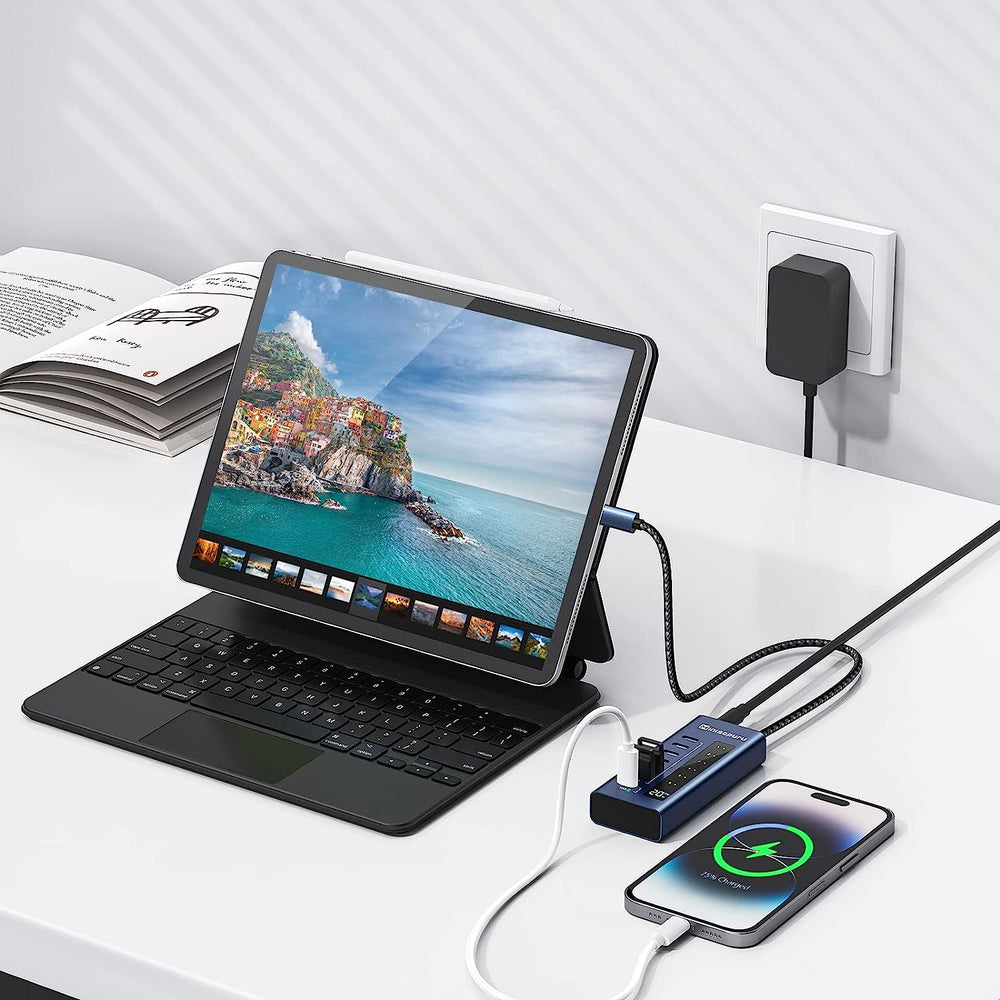Building a high-quality gaming computer isn't just about purchasing the most powerful CPU or GPU. A well-rounded and balanced hardware configuration is essential for an optimal user experience.
A balanced system ensures that all components are capable of handling the tasks they're designed for, such as gaming, and avoids situations where one part of the system holds back the performance of others. In a properly balanced PC, each component operates at its intended level of performance without being overburdened or underutilized. This leads to a smoother gaming experience and a more satisfying overall use of the system.
While all computers should be balanced, this guide will focus on the hardware requirements for a gaming system, though many of the principles apply to other types of systems as well.
What Is a PC Bottleneck?
In a computer, a bottleneck occurs when one component limits the performance of another due to differences in their capabilities. This isn't always caused by outdated or low-quality hardware, but rather by the relative performance levels of the components. Bottlenecks can occur in both high-end and entry-level systems, so balance is important regardless of the system's overall power.
Matching CPU and GPU for Optimal Performance
Bottlenecks aren't limited to the CPU and GPU, but the relationship between these two components is a prime example of how bottlenecks can affect a system. The CPU handles a wide range of tasks in modern games, such as physics calculations, audio processing, and network data. It also sends rendering instructions to the GPU, which then processes these instructions to create the images you see on screen.
If the GPU can process these instructions faster than the CPU can provide them, the GPU will idle until the next batch of instructions is ready. This means the GPU isn't performing at its maximum capacity, which can result in lower frame rates. Conversely, if the CPU sends instructions faster than the GPU can process them, the CPU's potential is wasted. The best approach is to choose a CPU and GPU that are closely matched in performance.
Building a Balanced Gaming PC
When planning a new build, consider not only the type of games you play and their hardware requirements, but also how each component interacts with the others.
CPU
Although games are optimized differently and some are more CPU-intensive than others, a high-performance processor is still essential for a great gaming experience. The hardware needs of someone who streams while gaming will differ from someone who plays less demanding games. Think about which scenario aligns more closely with your usage.
Once you've chosen the right CPU, consider the GPU you plan to pair it with to ensure a balanced system.
GPU
Choosing the right GPU depends on the games you play and how you plan to use your system. Most PC games offer extensive graphics options, allowing you to customize your experience. This means you can play newer games with an older or more basic GPU, though there may be some performance trade-offs in terms of visual quality.
If higher resolutions are a priority, a high-end GPU is likely the best choice. If 1080p is sufficient, your options are more flexible. To ensure a balanced build, your CPU and GPU should not only be compatible but also complementary. For example, a mid-range CPU paired with a high-end GPU like the GeForce RTX 3090 will not be balanced, and the same applies to a high-end CPU with a low-end GPU.
RAM
RAM is generally not a bottleneck in gaming unless you don't have enough. For most modern games, 8GB is a good starting point, but 16GB is becoming the standard. The amount of RAM you need also depends on how you use your computer. If you're only playing games, you'll need less RAM than if you're also streaming or multitasking.
In general, quantity is more important than speed for gaming. However, balance is still key. 16GB of slower RAM is better than 8GB of faster RAM, as long as it's modern DDR4.
Storage
Storage can also act as a bottleneck. Older hard drives (HDDs) can lead to longer load times and stuttering during game loading. The best solution is to upgrade to a solid-state drive (SSD), which offers much faster data access.
Display
Your display can also limit performance. If you're using a 60Hz, 1080p display, you won't get the full benefit of your gaming hardware. If you're aiming for higher frame rates or resolutions, make sure your display can support them, along with a balanced CPU and GPU.
Other Hardware
While CPU, GPU, RAM, storage, and display have the biggest impact on gaming performance, other components also play a role in creating a balanced system. A power supply that's mismatched with the rest of the system can shorten the lifespan of your components. A motherboard may not affect gameplay directly, but it can limit your upgrade options and affect features like networking and audio quality.
Balancing Your Build
Pre-built PCs are often designed to be balanced, but if you're building or upgrading your own system, you should prioritize components that are not only compatible but also complementary in performance. Consider how to allocate your budget effectively. For example, if you want a higher resolution experience, invest in a high-resolution display and a powerful graphics card. If you play fast-paced shooters like Call of Duty: Warzone or VALORANT, prioritize a high frame rate with a strong gaming CPU and a high-refresh-rate display.
Finding the Right Balance for Your PC
Your needs may vary depending on what you want from your gaming PC, but ensuring that your hardware is balanced will result in a better experience. You can always upgrade components later, so it's better to start with a balanced build that allows for future upgrades. A balanced system not only enhances your gaming experience but also ensures that your PC performs well in all situations, whether you're gaming or using it for other tasks.

